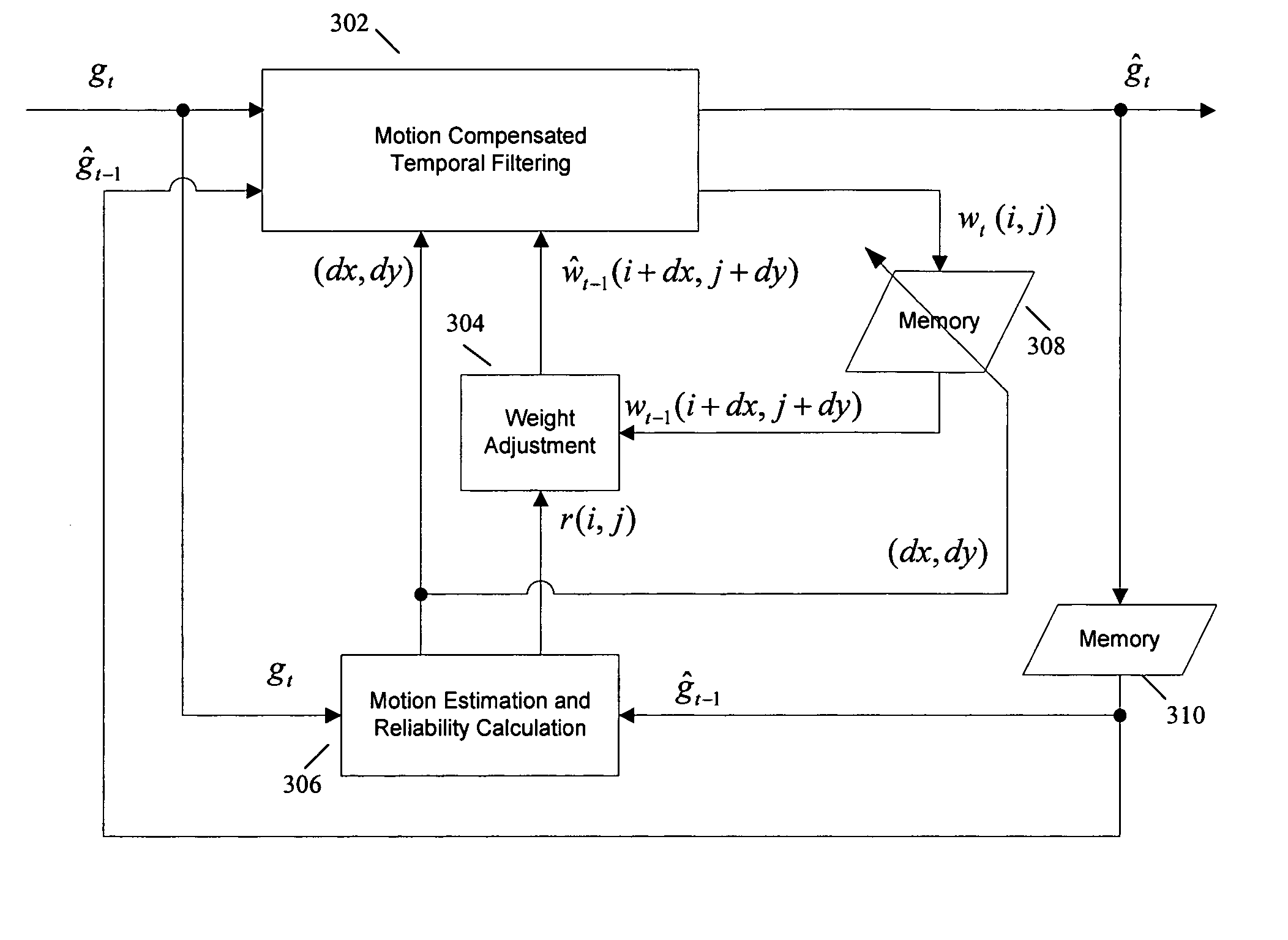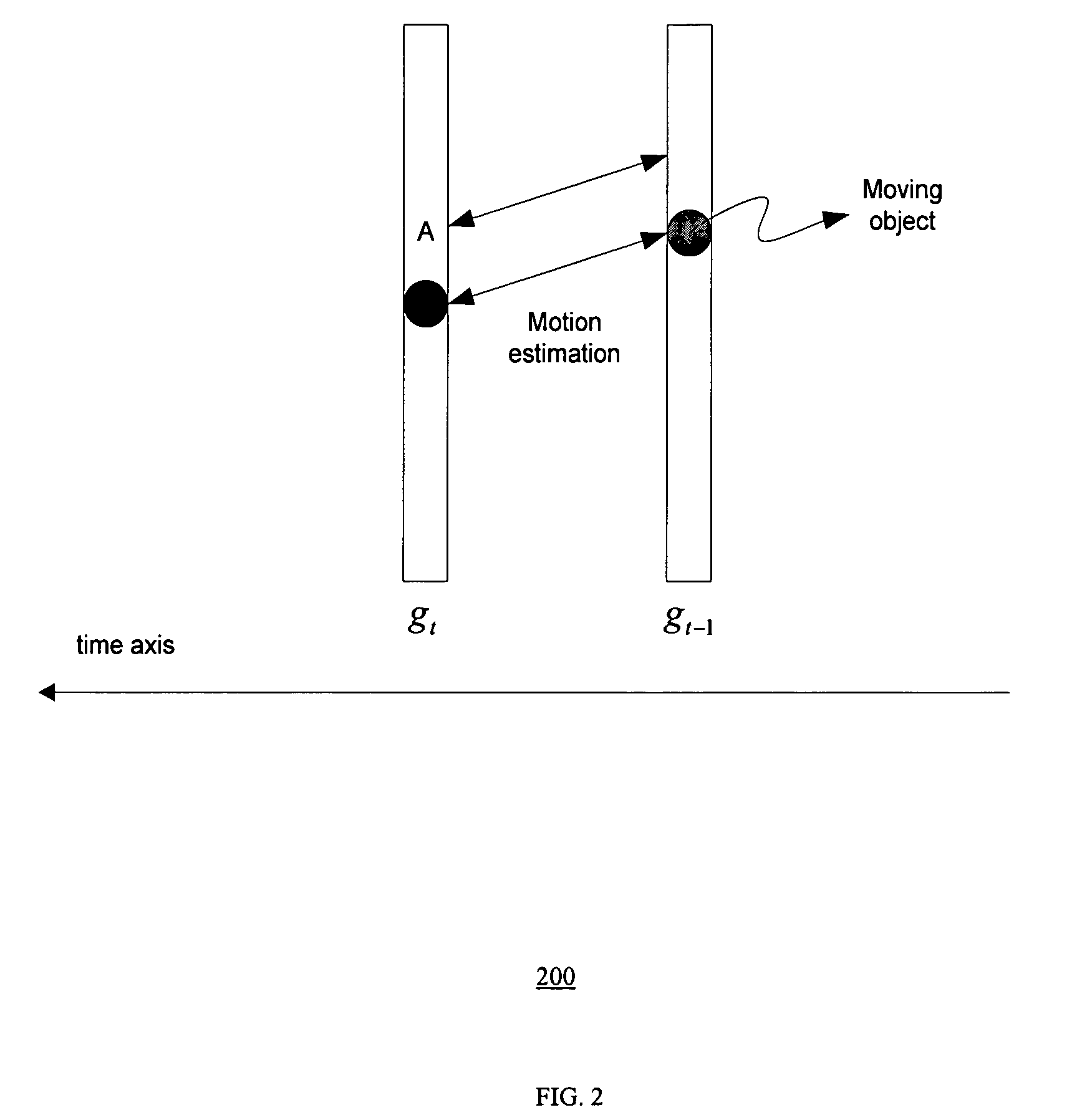Method of motion compensated temporal noise reduction
a temporal noise and motion compensation technology, applied in the field of video processing, can solve the problems of increasing the computational cost of sorting, severe blurring of images, and few of them used in real products, and achieve the effects of reducing noise, noise reduction, and reducing nois
- Summary
- Abstract
- Description
- Claims
- Application Information
AI Technical Summary
Benefits of technology
Problems solved by technology
Method used
Image
Examples
Embodiment Construction
[0020]Preferred embodiments of the present invention are now described in conjunction with the drawings. In one embodiment, the present invention provides a motion compensated temporal noise reduction method and system. In order to systematically describe the temporal noise reduction problem and said embodiment of the present invention, let gt denote the incoming video frame at time instant t and gt(i,j) denote the corresponding pixel value at the coordinates (i,j) where i represents the ordinate and j represents the abscissa. Assume the input video sequence is corrupted by independent, identically distributed additive and stationary zero-mean Gaussian noise with variance σ02, that is, any pixel gt(i,j) can be denoted as:
gt(i,j)=ft(i,j)+nt(i,j),
where ft(i,j) denotes the true pixel value without noise corruption and nt(i,j) is the Gaussian distributed noise component.
[0021]The noise variance σ02 can be pre-detected by a noise estimation unit. Commonly assigned patent application Ser....
PUM
 Login to View More
Login to View More Abstract
Description
Claims
Application Information
 Login to View More
Login to View More - R&D
- Intellectual Property
- Life Sciences
- Materials
- Tech Scout
- Unparalleled Data Quality
- Higher Quality Content
- 60% Fewer Hallucinations
Browse by: Latest US Patents, China's latest patents, Technical Efficacy Thesaurus, Application Domain, Technology Topic, Popular Technical Reports.
© 2025 PatSnap. All rights reserved.Legal|Privacy policy|Modern Slavery Act Transparency Statement|Sitemap|About US| Contact US: help@patsnap.com



